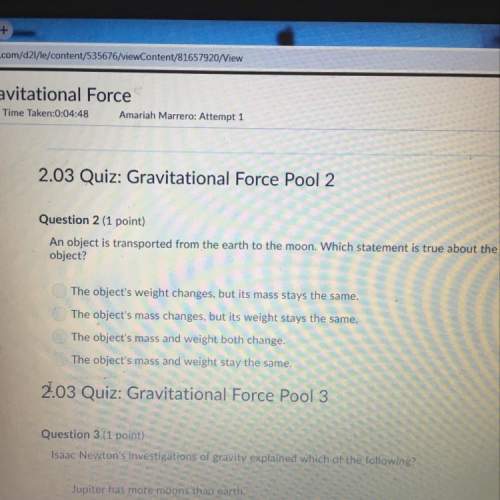
Chemistry, 23.10.2019 18:00 jesseemartinez22
When calcium carbonate is added to hydrochloric acid, calcium chloride, carbon dioxide, and water are produced.
caco3(s) + 2hcl (aq) > cacl2 (aq) + h2o(l) + co2(g)
how many grams of calcium chloride will be produced when 25.0 g of calcium carbonate are combined with 13.0 g of hydrochloric acid? which reactant is in excess and how many grams of this reactant will remain after the reaction is complete?

Answers: 1


Another question on Chemistry

Chemistry, 22.06.2019 00:00
Acurium-245 nucleus is hit with a neutron and changes as shown by the equation. complete the equation by filling in the missing parts. 52
Answers: 2

Chemistry, 22.06.2019 09:50
Although respiratory organs vary across different organisms, they all contain respiratory surfaces that have a large surface area and are extremely thin. explain why having an extremely thin respiratory surface with a large surface area is advantageous for the process of gas exchange
Answers: 1

Chemistry, 22.06.2019 13:50
How does the motion of particles in a gas change as the gas cools
Answers: 2

Chemistry, 22.06.2019 19:10
Astudent completes a titration by adding 12.0 milliliters of naoh(aq) of unknown concentration to 16.0 milliliters of 0.15 m hcl(aq). what is the molar concentration of the naoh(aq)? 1)5.0 m 2)0.20 m 3)0.11 m 4)1.1 m
Answers: 1
You know the right answer?
When calcium carbonate is added to hydrochloric acid, calcium chloride, carbon dioxide, and water ar...
Questions


















Physics, 23.06.2019 13:10





